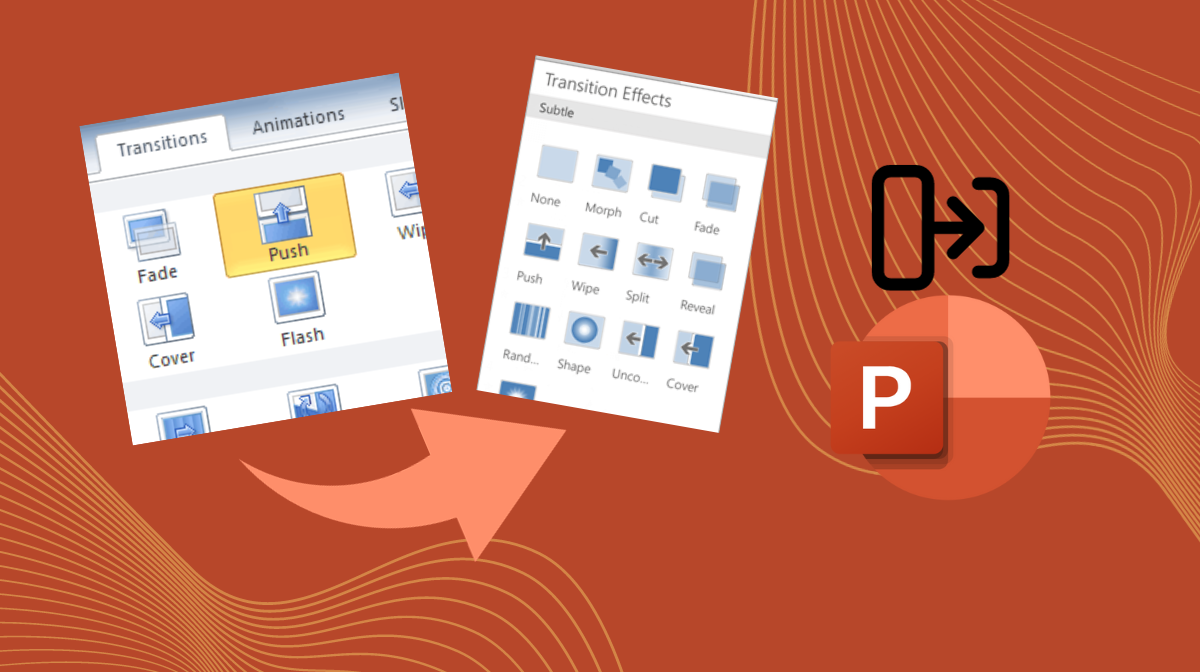As a seasoned marketer and graphic designer, I’ve navigated my fair share of presentations. In the vast sea of slideshows, the discerning eye can spot the difference. One key factor that often gets overlooked but holds immense power is the strategic use of transitions in presentations. In this blog post, you will learn about transition and their need in presentations.
The Unsung Heroes: Transitions
Transitions in presentations, often dismissed as mere aesthetic embellishments, play a crucial role in shaping the narrative, capturing attention, and infusing dynamism into your message. Beyond the visual flair, the art of using transitions lies in understanding the ‘why’ and ‘how.’

Why Should You Use Transitions?
Transitions act as the connective tissue in a presentation, seamlessly linking different elements and forming a cohesive and fluid entity. Much like ideas and topics within your presentation, transitions ensure your audience can follow your train of thought effortlessly. Without them, presentations risk feeling like a disorganized barrage of unrelated facts and figures.
Navigational Signposts for Your Audience
Consider transitions as navigational signposts that guide your audience from one point to another. They create anticipation and prepare the audience for what’s coming next. This signposting aids comprehension, preventing your viewers from feeling overwhelmed or confused.
Capturing Attention in the Digital Age
In an era of digital distractions, maintaining audience engagement throughout a presentation can be challenging. Transitions serve as sensory cues, capturing attention and signaling a shift. Just as our peripheral vision is attuned to movement, transitions keep the audience focused.
Elevating Enjoyment and Understanding
Well-designed transitions don’t just enhance the visual appeal; they also make the presentation more enjoyable and effective. The key lies in their relevance and subtlety. Not all transitions are created equal—opt for smooth, professional transitions that complement your content.

Navigating the Transition Terrain
While transitions undoubtedly add value, it’s essential to strike the right balance. Too many flashy transitions can be distracting, overshadowing your message. Each transition should serve a purpose, seamlessly guiding the audience to the next point without stealing the spotlight.
Consistency is Key
Maintaining consistency in the choice of transitions is crucial. Aim for a harmonious flow by using the same or similar transitions throughout your presentation. This not only ensures visual coherence but also reinforces the professionalism of your delivery.
Relevance Matters
Choose transitions that align with the content you’re presenting. A transition should complement the narrative, not detract from it. Matching the tone and subject matter ensures a seamless integration that enhances rather than disrupts the flow.
Crafting Impactful Presentations
In the realm of presentation design, every detail matters. The strategic use of transitions contributes significantly to the overall impact of your message. As you embark on your presentation design journey, resist the temptation to overload on transitions. Strike a balance, prioritize relevance, and remember—simplicity often speaks volumes.
Next time you’re gearing up for a presentation, consider the power of transitions. They’re not just animations; they’re storytellers, helping you communicate more effectively. And if you’re on the lookout for user-friendly presentation tools with AI-driven assets and animations, explore the options available. Your next visually appealing and seamlessly communicated project awaits.
Frequently Asked Questions (FAQs)
How do I add transitions to my presentation slides?
In popular tools like PowerPoint or Google Slides, look for a “Transition” menu. Choose a transition style and adjust settings as needed.
What’s the significance of using transitions in a presentation?
Transitions enhance flow, engage your audience, and emphasize key points. They create a seamless narrative, making your presentation more visually appealing.
Can transitions be distracting?
While transitions can enhance a presentation, excessive or flashy effects may distract. Opt for subtle transitions that complement your content rather than overshadowing it.
Are there recommended transitions for different presentation scenarios?
Yes, choose transitions based on your presentation’s tone. Subtle fades work well for serious topics, while dynamic slides may suit energetic or creative presentations. Experiment and find what fits your style.
Related Articles:










